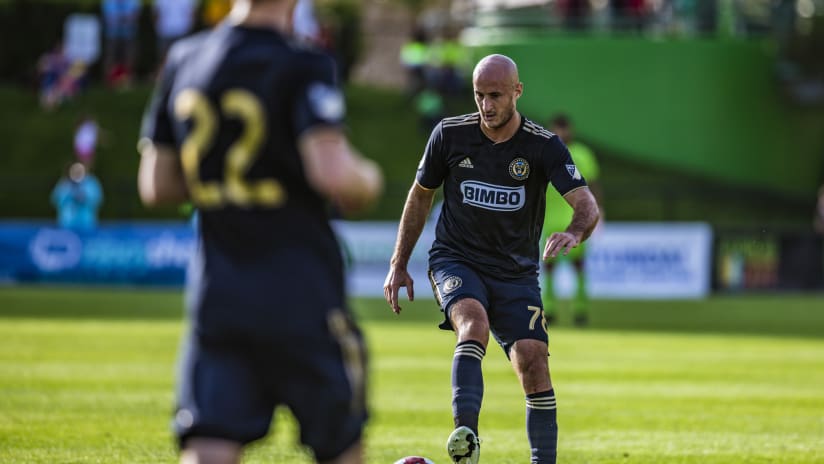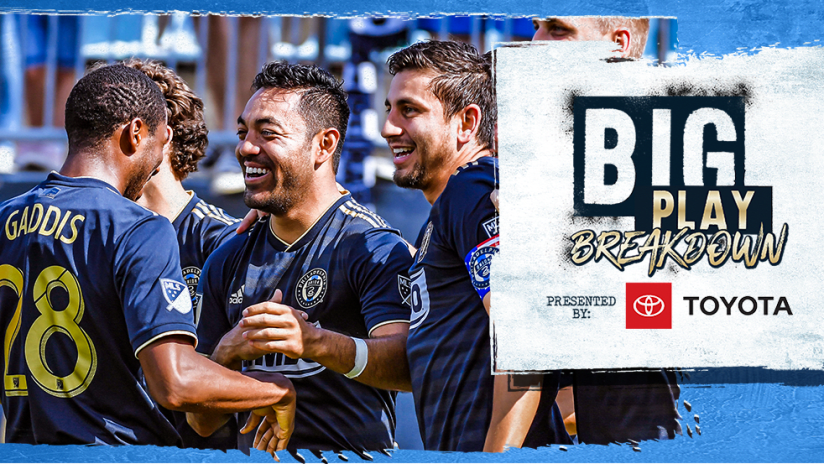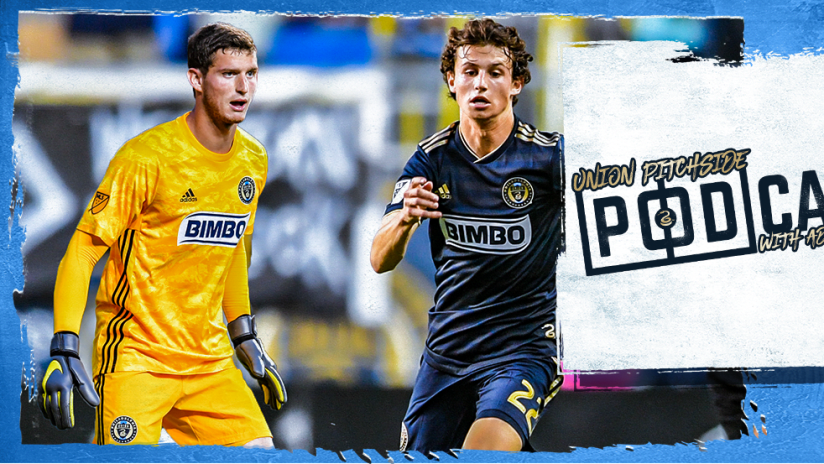Crafting a philosophy is the easy part.
Sticking to it? That’s much harder.
When Earnie Stewart arrived in Philadelphia, he consulted with ownership and the technical staff led by Jim Curtin and decided that the Union’s academy, with its associated soccer-focused school, YSC, was a competitive advantage the club needed to maximize. Stewart poured resources into the project and now, as he prepares to leave to become the General Manager of the US Men’s Soccer Team, the first wave of talent has established itself in the Union starting eleven.
And beyond Auston Trusty and Mark McKenzie, the team’s everyday center backs, three additional homegrown players are part of the first team setup, pushing for minutes every day in practice. Derrick Jones, Anthony Fontana, and Matthew Real have not broken into the starting lineup with the regularity of Trusty and McKenzie, but they are among the elite talents in American soccer and all but Jones will feature in the MLS Homegrown Game next week.
The academy was a big part of what attracted Stewart to the Union project. But as long as it can take to develop top talent, the timeline for instituting a playing philosophy throughout a club and getting that talent to adhere to it can be far longer. And that is what makes Philly’s current crop of homegrowns truly impressive.
Set aside the size and aggression of Auston Trusty, the speed and technique of Mark McKenzie, the soft feet of Anthony Fontana, the passing range of Matt Real, and Derrick Jones’ ability to take over a midfield by himself. These five players were already far along in their development when Stewart arrived in Philly and began — with considerable help and buy-in from Chris Albright, Jim Curtin, and the rest of the Union staff — building a coherent playing style that guided how every player from the first team to the pre-academy should train. It took from Stewart’s first days until this season for the seasoned veterans of the first team to begin executing the Union’s approach on a regular basis, so asking the homegrowns to do it in the same amount of time is presumptuous.
Yet here they are, each arriving by a unique path and facing different challenges going forward.
Auston Trusty. Trusty rose from the academy to Bethlehem Steel, putting in time with Brendan Burke’s staff as he sought to prove his readiness for the next level. It was far from clear he would be, but as the year wound down the club began to see signs that Trusty was turning a corner. His decision-making improved and he was asserting himself in the air. In the offseason, Trusty was put through a passing tree over and over, working on accuracy and distance, how to lead a fullback and cycle through options at speed. Then the season began and, barely 20 minutes into the opening match, the teenager was left behind as Juan Agudelo exploded through the Union defense and in on goal alone. Trusty made an incredible recovery, leaning heavily on his elite speed and size to poke the ball away at the last moment. Those athletic feats are simple for the big defender (when I recently asked the homegrown players who would win in a three point shootout and a hardest slapshot contest, Trusty was sure it was him. “Keep naming sports,” he said, so certain he could excel at them all that, horse racing aside, I believe him), but now he is mastering the positioning required to prevent that initial breakaway, working on it game after game against the best strikers in MLS.
Mark McKenzie. McKenzie chose a slightly different path from his partner in back. He went to Wake Forest, a soccer powerhouse last season that saw three players taken in the 2018 SuperDraft. But the lure of professional soccer drew McKenzie back to the Union, and he stood out on the pitch for Steel. Unlike Trusty, whose 6’4” frame matches the prototype for a defender, McKenzie’s success has snuck up on many. His speed and dominance at every level are too much to ignore, though (Union coaches will tell you McKenzie clocks in as every bit as fast as the lightning quick Fafa Picault), and the center back’s calmness under pressure has elevated him to the top of the US U20 class. When Tab Ramos sets his squad for 2019 U20 World Cup qualifiers later this year, there is little doubt McKenzie will be the first name on his list of defenders. The only question is whether the teenager will be available, since he’s, y’know, starting for a professional team now.
Anthony Fontana. Fontana leapt onto the Union scene with a goal in his first start back on opening night. The Delaware native is the harbinger of the full “path to the pros” that Earnie Stewart has sketched out for the Union’s young players. From playing under Curtin in the youth setup to graduating from YSC this year, Fontana has consistently shown that he has the skill to make it at the top level. This season, he’s learning how to play with his back to goal more often, and how to influence a game off the ball rather than advance it with his feet as he did as a box-to-box player. With Steel, Fontana has met the types of challenges that test the character of a young player: He’s no longer the best player on the pitch, and he’s not on the ball as much as he’s used to. The adjustment is real, but Philly signed the young midfielder as a homegrown player because they believe he can make it.
Matt Real. For Real, the attacking skillset is impressive, and the defensive instincts are where the real work has taken place recently. Real is good enough to dominate kids his age, and he has done so throughout his past few years of development. When Tab Ramos calls players up for U20 World Cup qualifying, Real will be a favorite to start at left back. He has taken his lumps for Steel this season but always bounces back, never changing his aggressive approach. Since he plays one of the most difficult positions in the league — the influx of dangerous wingers has made fullback one of the most intellectually challenging spots to understand on the fly — Philly will be patient with Real. His growth should be assisted by time at the U20 World Cup next year, provided he hasn’t broken into the first team on a regular basis by then.
Derrick Jones. Jones has had the build of a professional for years, and his accelerated rise through the academy ranks has made integration to the first team appear slow by comparison. But with an established set of starters in midfield, Jones has spent significant time with Steel this season after collecting over 700 minutes for the first team last year.
The popular wisdom is that Jones is taking a step back, but the truth may be slightly different. Whereas last season Philly began the year with Ale Bedoya as the number ten, the captain is now firmly entrenched in the box-to-box role Jones also plays. Additionally, the secret sauce that makes the Union defense work is the understanding between Bedoya and Haris Medunjanin about who should drop in and protect the back four as the match evolves. Jones does not have that rhythm with either player he could partner with, nor is he the best option to step in when Bedoya or Medunjanin is out — in those moments, Jim Curtin has turned to Warren Creavalle’s defensive nous to replace the rhythmic movement the usual starters possess.
Basically, Jones has been given a year to hone his instincts under Brendan Burke, and he’s done well. The midfielder was the best player on the pitch when Steel faced future MLS team FC Cincinnati earlier this season, and his ability to maintain a high level of performance throughout a match has improved.
These homegrown players hold up a key pillar of the Union’s strategy going forward. They may not all become stars, but they are all good enough to be on a MLS roster, and they know how to play the Union’s style.
Four will participate in the MLS Homegrown game while the fifth, Jones, will likely hold down the center for Bethlehem Steel against Atlanta United II this weekend. They are not Earnie Stewart’s legacy, but, instead, his inspiration. If talent like this was already two years away when Stewart joined the Union, he knew implementing a coherent playing philosophy would allow even more to flourish in the years to come. That new talent is arriving fast. But right now, the Union already have a core of homegrown players that are fighting for minutes as their club fights for the playoffs.













